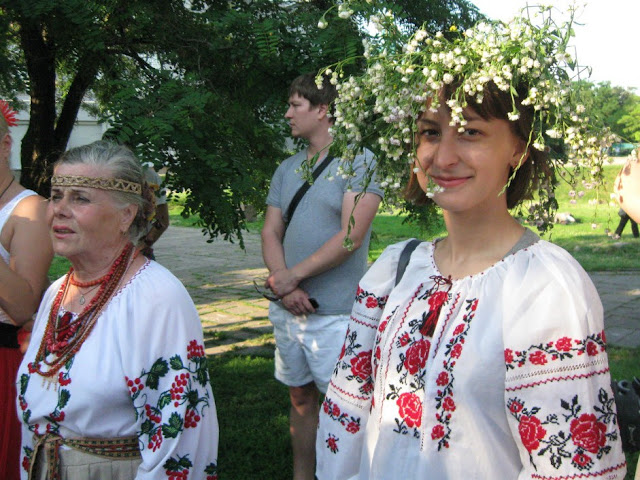 Summer male and female costumes, Pinsk district of Brest region, Western Palesse
Summer male and female costumes, Pinsk district of Brest region, Western PalesseThe territory of Belarus is subdivided into six historical and ethnographic regions with specific features of traditional costume. Besides, costumes from different districts of the same region have their unique and characteristic features and vary in their decoration and ornament or in the way of styling. But the basic pieces are similar on the whole territory and let's have a look at them first.
Historically traditional clothes of Belarus people were almost completely made of home-made fabrics and decorated with woven and embroidery ornament. Flax and hemp were cultivated on the farms and widely used for making clothing along with wool and leather.
The basic component of both male and female costumes is a long linen shirt. Women wear a skirt over the shirt which is made from woolen, half-woolen or linen fabric and has different names - andarak, spadnitsa, yupka. It is constructed of several pieces of cloth sewn together. The ordinary type is sewn from three, four or six pieces that are gathered or pleated into the waistband. The paniova, the earliest type of skirt, consists of pieces of cloth, often four, which are attached to the waistband but unsewn at the sides.


.jpg)







